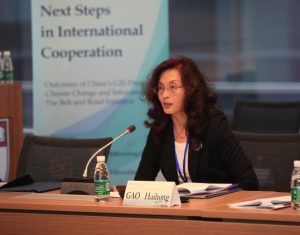The outbreak of Covid-19 has disrupted Chinese economic activity. In the first quarter 2020, China’s GDP contracted by 6.8%, the lowest since 1992 when China first reported quarterly data. Fixed asset investment and retail consumption – the two major demand drivers – dropped respectively 16.1% and 19% year-on-year. The service sector, industrial production and agriculture – the three supply drivers – also fell by 5.2%, 9.6% and 3.3%, respectively. This sharp economic downturn is a reasonable reaction to drastic exogenous shocks. It also raised the concern that how resilient the Chinese economy is, as China was the first country to face the outbreak, and there are still unknowns about the impact of the health crisis.

China has confronted multiple economic challenges since the Trump administration sparked a trade war in early 2018. The negative impact of escalating tariffs was expected. Domestic rebalancing has been on the right track. But some key reforms faced a bumpy road. The financial system has recovered from deleveraging. Domestic debt, though, has reached an unsustainable level. The outbreak of the health crisis interrupted the growth path but also forced the Chinese government to prioritise a different task – containing the virus.hina has succeeded in halting the spread of coronavirus, as far as the domestic front is concerned. However, the effort has been costly. Policy-makers have to promote an economic recovery in a balanced way. The People’s Bank of China must balance rising inflation pressure and the need for financing the real economy. In March, the central bank conducted less aggressive, but clearly targeted, monetary easing by releasing Rmb550bn ($77.6bn), 73% of which targeted vulnerable small companies and private enterprises, the power houses for job creation. In order to further lower financing costs for companies, the central bank cut the one-year Loan Prime Rate (LPR) by 20 basis points and five-year LPR by 10 basis points on 20 April. The anti-virus stimulus came at the time that China’s fiscal policy geared towards foster consumption. With additional stimulus, equivalent to more than Rmb3.6tn ($510bn), China expects an increase in infrastructure investment that can quickly fill the gap from lower consumption. However, some experts question the efficiency of the fiscal boost and say it may worsen debt problems locally and nationally.
More importantly, in April, the government decided to restart the reform for domestic factor market, a plan first set out in 2013 at the Third Plenum, but suspended in some key areas in the following years. According to the reform plan, market force will play a decisive role in the pricing of land, labor, capital, technology and data. Such reform will lead China toward a more market-oriented economy in the medium and long-run.
One challenge for China’s domestic recovery lies in external repercussions as a result of highly interlinked global supply chains. China shows some early signs of a production recovery, but this will be sustained only if external markets provide demand. Some global supply chains may be relocated, reflecting an emerging trend towards deglobalisation. China needs to combine openness, domestic reform, and a better investment environment.
The most difficult test concerns international co-operation. The pandemic knows no borders, yet containing the virus requires isolation. Stages of contagion vary from country to county, which makes coordinated action unlikely. In fighting the economic impact, central banks and treasuries worldwide have intervened without explicit coordination. The G20 leaders and international organisations called for collective actions to fight the pandemic. In response to emergency needs, the International Monetary Fund deployed its arsenal of financial instruments to support its member countries. The Federal Reserve, the last lender of resort, extended dollar swap lines to more central banks in order to ease global liquid shortage. More collective effort is needed to rebuild confidence on the financial markets and elsewhere. China has been part of this effort – and that will continue.
Updated, 20 April 2020; early version titled “Resilient China can help lead global recovery” published on OMFIF, 25 March 2020.
Haihong Gao is Director of the Research Centre for International Finance, Institute of World Economics and politics, Chinese Academy of Social Sciences.

